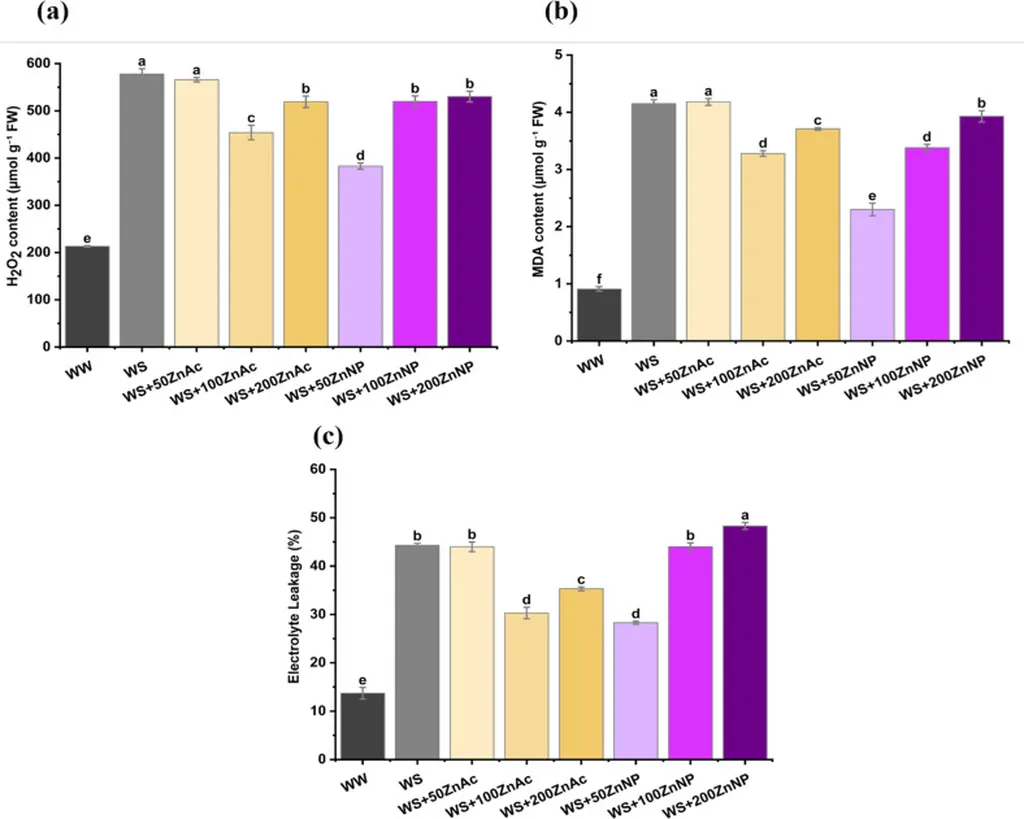In the heart of China’s Guangdong province, researchers are unlocking new ways to combat one of agriculture’s most pressing challenges: drought. A recent study led by Nazir Ahmed at the College of Horticulture and Landscape Architecture, Zhongkai University of Agriculture and Engineering, has revealed that biogenic zinc nanoparticles (ZnNPs) could significantly enhance drought resilience in citrus plants. The findings, published in the journal *Plant Stress* (which translates to *Stress in Plants*), offer a promising avenue for sustainable agriculture in an era of climate change.
The study compared the effects of ionic zinc (iZn) and ZnNPs, synthesized from castor leaf extract, on Citrus reticulata seedlings under drought conditions. The results were striking. “ZnNPs showed superior bioavailability due to their nanoscale size, uniform morphology, and crystalline structure,” Ahmed explained. This enhanced bioavailability translated into improved physiological and biochemical responses in the plants.
Under drought stress, foliar application of ZnNPs boosted relative water content, chlorophyll and carotenoid levels, and photosynthetic rate, leading to greater biomass accumulation. The plants treated with ZnNPs also exhibited significantly enhanced antioxidant enzyme activity, including superoxide dismutase (SOD), catalase (CAT), peroxidase (POD), and glutathione S-transferase (GST). This boost in antioxidant activity helped mitigate oxidative stress, reducing electrolyte leakage, hydrogen peroxide (H2O2), and malondialdehyde (MDA) levels, which are indicators of cellular damage.
The study also delved into the molecular mechanisms underlying these improvements. Transcriptomic analysis revealed that ZnNPs treatment led to the differential expression of 1545 genes, compared to just 639 in iZn-treated seedlings. Key genes involved in stress response, such as CrHSP70, CrWRKY40, CrSOD1, CrNCED2, CrLOX2–1, CrPE53, and CrAMT3–1, were upregulated. Additionally, ZnNPs activated metabolic pathways like phenylpropanoid and flavonoid biosynthesis, which help mitigate oxidative stress, and cutin/suberin biosynthesis, which reinforces physical barriers against water loss.
The implications of this research are far-reaching. As climate change intensifies, droughts are becoming more frequent and severe, threatening global food security. The use of ZnNPs could provide a sustainable solution for enhancing drought resilience in citrus and potentially other crops. “This is the first integrated evidence that ZnNPs enhance citrus drought tolerance through coordinated molecular and physiological mechanisms,” Ahmed noted. “It offers a sustainable nanotechnology-based strategy for climate-resilient horticulture.”
The commercial impacts of this research could be substantial. For the energy sector, which often competes with agriculture for water resources, this technology could help reduce water usage in farming, freeing up more water for other uses. Additionally, the enhanced productivity and resilience of citrus crops could lead to more stable food supplies and economic benefits for farmers.
As we look to the future, the integration of nanotechnology in agriculture holds immense potential. This research not only highlights the benefits of ZnNPs but also paves the way for further exploration of nanotechnology-based solutions in sustainable agriculture. With continued innovation and investment, we may soon see a new era of climate-resilient farming, where crops thrive despite the challenges posed by a changing climate.

